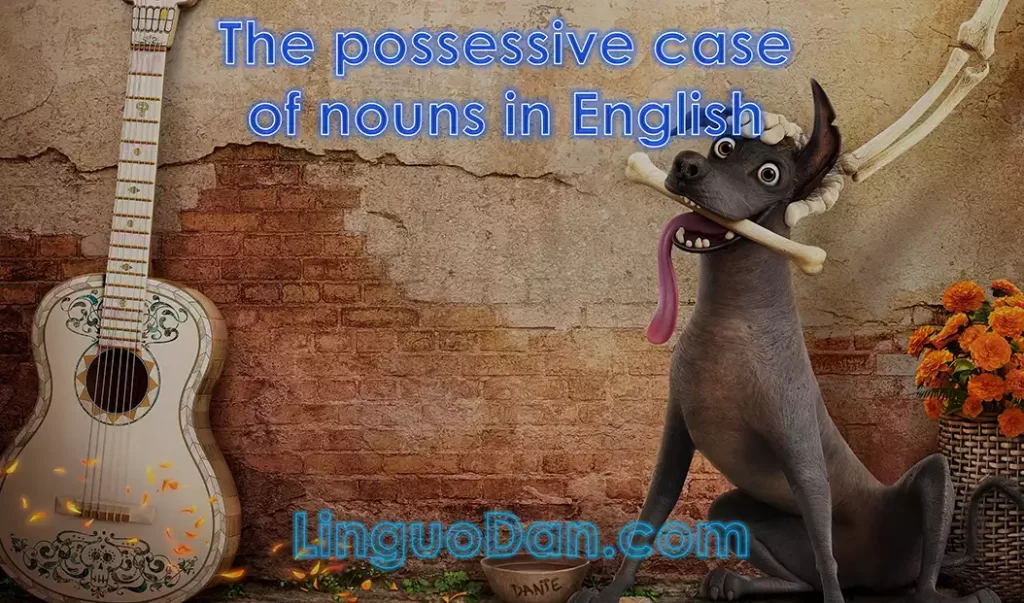The possessive case of nouns in English

The possessive case of nouns in English
The possessive case of nouns is one of the most important aspects of English grammar, helping to indicate to whom a certain thing or idea belongs. In this article, we will consider in detail the rules for using the possessive case of nouns in the English language.
First of all, the possessive case is used to indicate that a thing or idea belongs to a specific person or group of people and answers the question “whose?“. To form the possessive case in nouns, you need to add an apostrophe and the letter “s” to the end of the noun.
Example:
- John‘s book
If the noun ends in “s“, then to form the possessive case, you can add an apostrophe and the letter “s“, or just an apostrophe.
Example:
- James‘s car або James’ car
If the noun belongs to the plural, then we add an apostrophe and the letter “s” to the end of the word that already has the ending “s”.
Example:
- The students‘ books
Also, if the thing belongs to a group of people, and not to a specific person, we add an apostrophe and the letter “s” to the end of the word that denotes this group of people.
Example:
- The teachers’ office
In some cases, if the noun does not end in “s”, but already has an “s” sound in its form, the possessive case can be formed only by adding an apostrophe.
Example:
- The driver‘s bus
However, it is worth remembering that some nouns have peculiarities of forming the possessive case. For example, nouns ending in “x” or “z” may require adding “es” instead of “s” to form the possessive case.
Example:
- The fox‘s box
In addition, nouns that have an unusual form in the plural may have different rules for forming the possessive case.
Example:
- The children‘s toys
- The men‘s hats
A table with examples of the formation of the possessive case of nouns
| Noun ending | Formation of the possessive case |
|---|---|
| -s | add an apostrophe and “s” (‘s) |
| – sound s | add an apostrophe (‘) |
| – other endings | add an apostrophe and “s” (‘s) |
| -x | add an apostrophe and “es” (‘es) |
| -z | add an apostrophe and “es” (‘es) |
| -y (ending with “y” changed to “i”) | add an apostrophe and “s” (‘s) |
| Unusual plural form | add an apostrophe and “s” (‘s) |
Example:
- The cat’s tail
- The bus’ wheels
- The fox’s den
- The box’s lid
- The quiz’s questions
- The women’s shoes
- The people’s opinions
The form of the possessive case of a noun is formed according to the following scheme:
| Noun in the singular | + ‘s | boy – boy’s |
| A plural noun that ends in -s | + ’ | boys – boys’ |
| A plural noun that does not end in -s | + ’s | men – men’s |
Correct pronunciation with the ending -‘s
The ending -‘s is pronounced as:
- [s] — after voiceless consonants, except for [s], [∫], [t∫];
- [z] — after vowels and voiced consonants, except [z], [dʒ], [ʒ];
- [iz] — after the sounds [s], [z], [ʒ], [t∫], [dʒ], [∫].
- If a singular noun ends in -s, -ss, -x, an apostrophe or -‘s is added in writing to form the possessive case. In both cases, they are pronounced as [iz].
Note that some nouns have the same form in singular and plural, so the formation of the possessive case may be different. For example, “deer” has the same form in the singular and plural, so the possessive case would be “the deer’s antlers”. It is important to remember that using the correct possessive case will help you understand who owns a certain thing or idea in a sentence. Therefore, carefully study the rules for using the possessive case of nouns and use them correctly in your own language constructions.